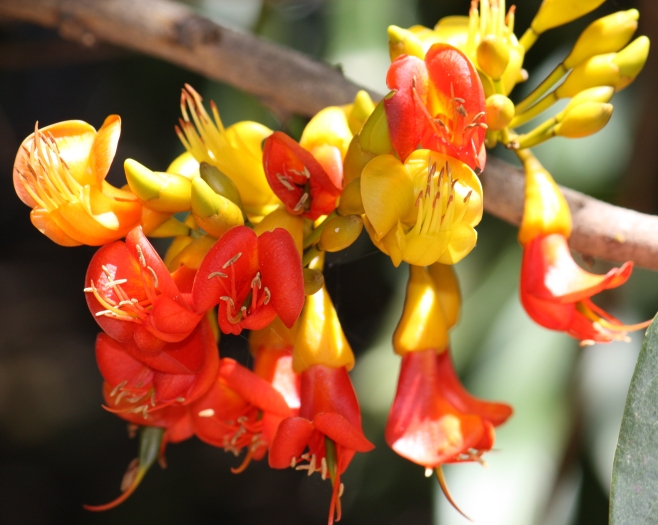Moreton Bay Chestnut
(Castanospermum australe)
Moreton Bay Chestnut (Castanospermum australe)
/
/

Jan Smith from Brisbane, Australia
CC BY 2.0
Image By:
Jan Smith from Brisbane, Australia
Recorded By:
Copyright:
CC BY 2.0
Copyright Notice:
Photo by: Jan Smith from Brisbane, Australia | License Type: CC BY 2.0 | License URL: https://creativecommons.org/licenses/by/2.0 | Uploader: File Upload Bot (Magnus Manske) | Publisher: Wikimedia Commons | Title: Castanospermum_australe_flower_1.jpg | Notes: {{Information |Description={{en|1=Casuarina cunninghamiana (River She-Oak) in full flower photographed on Dalman Parkway in the Wagga Wagga suburb of Glenfield Park.}} |Source={{own}} |Author=[[User:Bidgee|Bidgee]] |
































Estimated Native Range
Summary
Castanospermum australe, commonly known as Moreton Bay Chestnut, is an evergreen tree native to the coastal rainforests and riverine forests of Eastern Australia and the island of Vanuatu. It can reach heights of 52-110 feet (16-34 meters) and a width of 15-36 feet (4.5-11 meters). This species is characterized by its glossy, dark green pinnate leaves and large panicles of showy red, yellow, and orange pea-like flowers that bloom in the summer, followed by large, distinctive seed pods containing shiny, chestnut-like seeds.
Moreton Bay Chestnut is valued for its ornamental flowers and as a shade tree in tropical and subtropical regions. It is often used in urban planting, large gardens, and as a potted plant in cooler climates. The tree prefers well-drained, fertile soils and requires regular watering, particularly during dry periods. It thrives in full sun to part shade. While it is generally low-maintenance, it can be susceptible to root rot in poorly drained soils. In cultivation, it is important to be aware of its potential invasiveness when grown outside its native range, as it can displace local vegetation.CC BY-SA 4.0
Moreton Bay Chestnut is valued for its ornamental flowers and as a shade tree in tropical and subtropical regions. It is often used in urban planting, large gardens, and as a potted plant in cooler climates. The tree prefers well-drained, fertile soils and requires regular watering, particularly during dry periods. It thrives in full sun to part shade. While it is generally low-maintenance, it can be susceptible to root rot in poorly drained soils. In cultivation, it is important to be aware of its potential invasiveness when grown outside its native range, as it can displace local vegetation.CC BY-SA 4.0
Plant Description
- Plant Type: Tree
- Height: 52-110 feet
- Width: 15-35 feet
- Growth Rate: Slow
- Flower Color: Red, Yellow, Orange
- Flowering Season: Summer
- Leaf Retention: Evergreen
Growth Requirements
- Sun: Part Shade
- Water: Medium
- Drainage: Fast
Common Uses
Bird Garden, Erosion Control, Showy Flowers
Natural Habitat
Native to coastal rainforests and riverine forests of Eastern Australia and Vanuatu
Other Names
Common Names: Blackbean
Scientific Names: , Castanospermum australe, Castanocarpus australis, Castanospermum australe var. brevivexillum, Castanospermum brevivexillum, Castanospermum cunninghamii, Vieillardia grandiflora,
GBIF Accepted Name: Castanospermum australe A.Cunn. ex Mudie